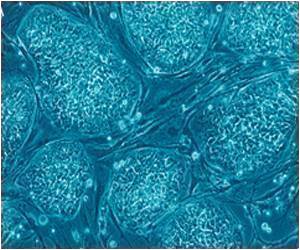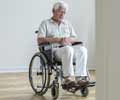Highlights:
- Infusion of cord blood cells can help lessen symptoms in children with cerebral palsy
- The infusion improved whole brain connectivity and motor function
- Cord blood infusion of at least 25 million stems cells in children showed improvement.
Umbilical Cord Blood Cells Improve Motor Skills in Children with Cerebral Palsy
Umbilical cord blood is a rich source of blood stem cells to treat cancers, neurological disorders, and genetic diseases. It also contains other therapeutic cells that could influence the formation of new neural connections in children with cerebral palsy. A research team from the Duke University Medical Center conducted a placebo-controlled phase two clinical trial in children with cerebral palsy. The trial included children aged between one and six years of age with varied types and severities of cerebral palsy. The research team was led by Dr Joanne Kurtzberg, director of Duke's Pediatric Blood and Marrow Transplant Program and the Robertson Clinical and Translational Therapy Program. Dr Kurtzberg has been a pioneer in testing the therapeutic potential of umbilical cord blood. Previously conducted research has indicated that it is safe for children with cerebral palsy to receive an infusion of their own umbilical cord blood. In the current study, the research team found the approximate dosage of umbilical cord blood cells to lessen the symptoms of cerebral palsy.Tools to Measure Brain Connectivity and Motor Skills
Tools to evaluate the children’s progress were MRI to measure brain connectivity and the Gross Motor Function Measure (GMFM-66), to analyze the child's ability to crawl, roll, kneel, and complete other movements based on age and development.Based on the amount and quality of the cord blood each child had in storage, the research team tested doses from 10 million cells per kilogram of body weight up to 50 million cells per kilogram.
One intravenous dose of at least 25 million stem cells per kilogram of the child’s body weight improves motor function a year later. The improvements in motor skills and brain connectivity were greater than those typically observed for children of similar age and condition. The GMFM-66 accounts the expected growth based on age and the severity of the cerebral palsy. Most of the study participants improved when retested on the GMFM-66 a year after receiving an infusion, even those who received a placebo.
Children who received doses of cord blood of at least 25 million cells per kilogram of body weight progressed in motor skills beyond their expected increases when they were tested a year after infusion.
"We are encouraged by the results of this study, which shows that appropriately dosed infusions of cord blood cells can help lessen symptoms in children with cerebral palsy. We still have a lot to learn about this therapy so that it can be optimized and accessible to more children with cerebral palsy,” said Dr. Kurtzberg.
"Now that we have identified a dosing threshold, we are planning additional studies testing the benefits of multiple doses of cells, as well as the use of donor cells for patients whose own cord blood was not banked."
Children with cerebral palsy gain motor function as they grow and develop and receive occupational and physical therapies. The improvements are different for each child and could be subtle, but sometimes even a seemingly small difference is significant. "For example, a child's ability to turn their hand from facing down to facing up can change their ability to hold or grasp something, which can make a big difference in their everyday life," said Dr. Jessica Sun, a pediatric hematologist-oncologist at Duke and lead author of the paper.
The limitation of the study is that participants from well-resourced families were also receiving frequent physical and occupational therapy and those advantages could have influenced the results.
"We are hopeful that cord blood and cell therapy may have a role in treating children with cerebral palsy and brain injury and are encouraged to continue this promising research," said Dr Sun.
The findings of the trial are published in Stem Cells Translational Medicine
Cerebral Palsy
Cerebral palsy is a motor disorder affecting young children that cause lifelong disabilities. Cerebral palsy is a result of in-utero or perinatal brain injuries such as hemorrhage, stroke or hypoxic insult. Cerebral palsy affects two to three per 1,000 live births. Children with cerebral palsy have varying degrees of functional impairments in motor skills and self-mobility. Currently available treatment options optimize function and quality of life. However, there are no curative therapies.Reference:
- Jessica M. Sun, Allen W. Song, Laura E. Case, Mohamad A. Mikati, Kathryn E. Gustafson, Ryan Simmons, Ricki Goldstein, Jodi Petry, Colleen McLaughlin, Barbara Waters-Pick, Lyon W. Chen, Stephen Wease, Beth Blackwell, Gordon Worley, Jesse Troy, Joanne Kurtzberg. Effect of Autologous Cord Blood Infusion on Motor Function and Brain Connectivity in Young Children with Cerebral Palsy: A Randomized, Placebo-Controlled Trial. STEM CELLS Translational Medicine, 2017; DOI: 10.1002/sctm.17-0102
Source-Medindia
















